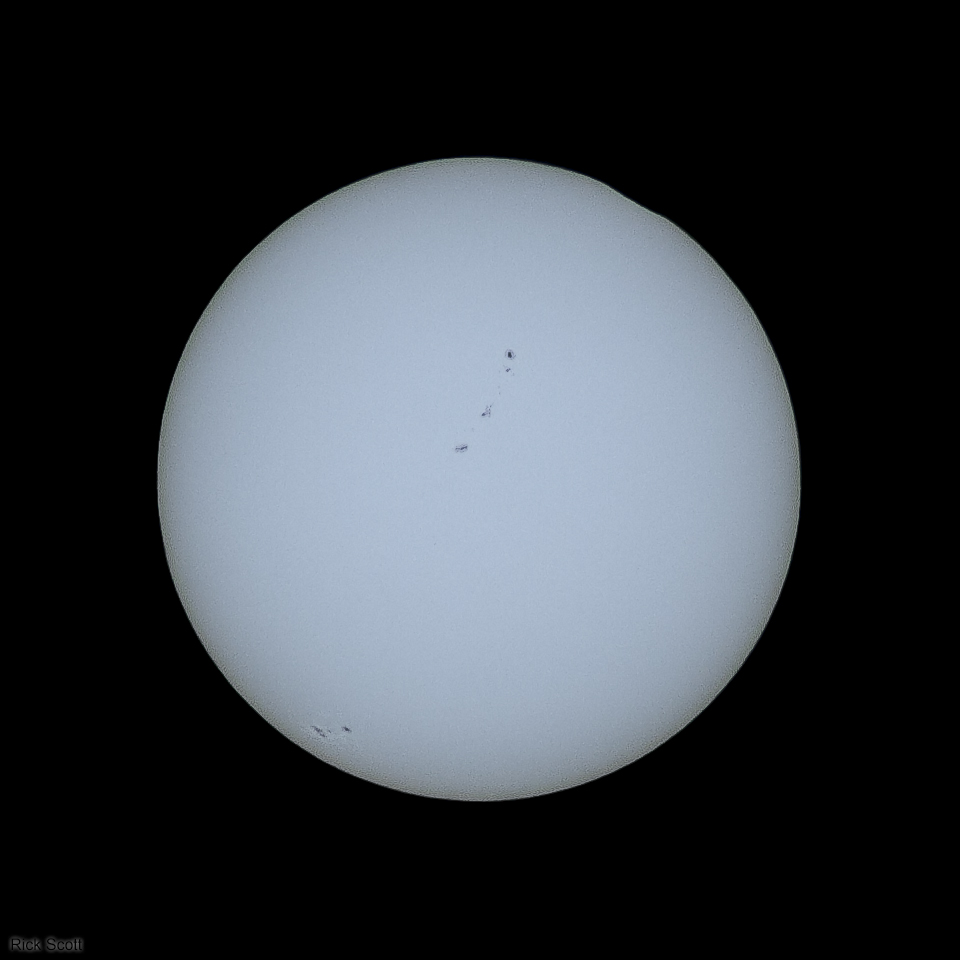
The sun with a very small nibble taken out of it just after 1st contact.
Exposure: 1/1000 sec, f/5, ISO 100, raw mode
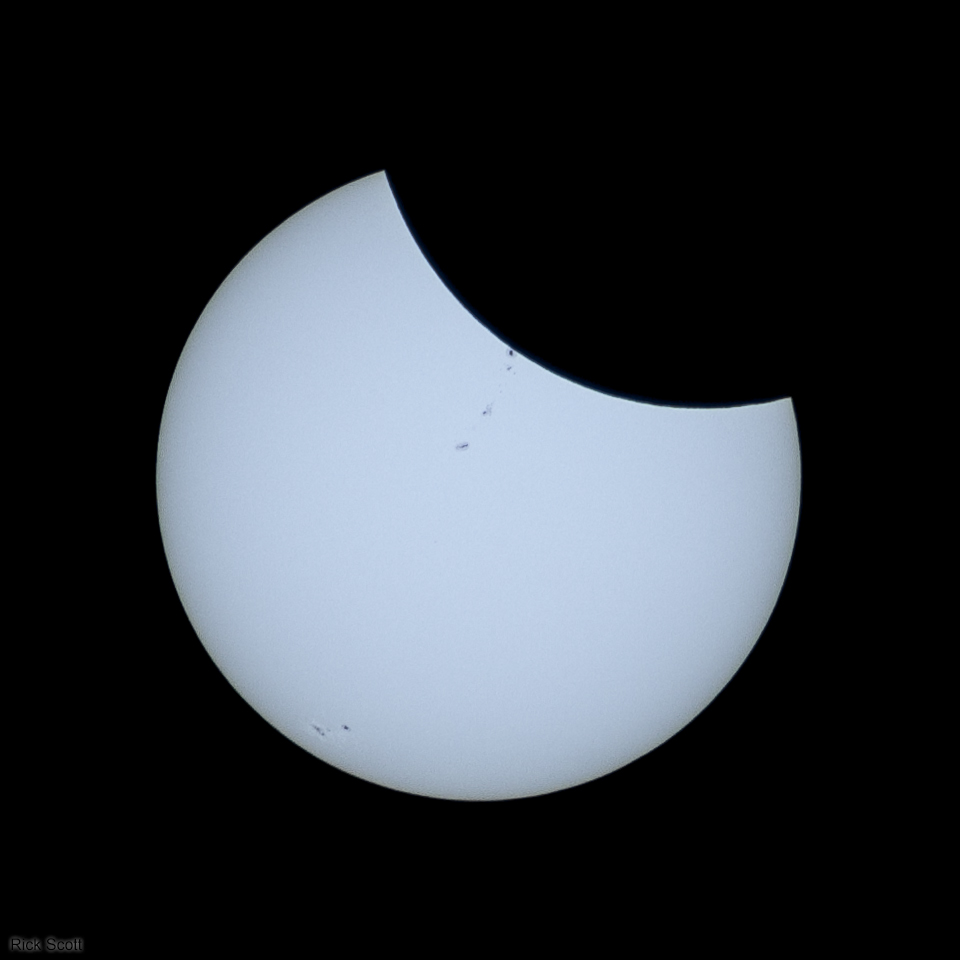
The moon just about to start covering up a large sunspot group during the partial phase of the eclipse.
Exposure: 1/1000 sec, f/5, ISO 100, raw mode
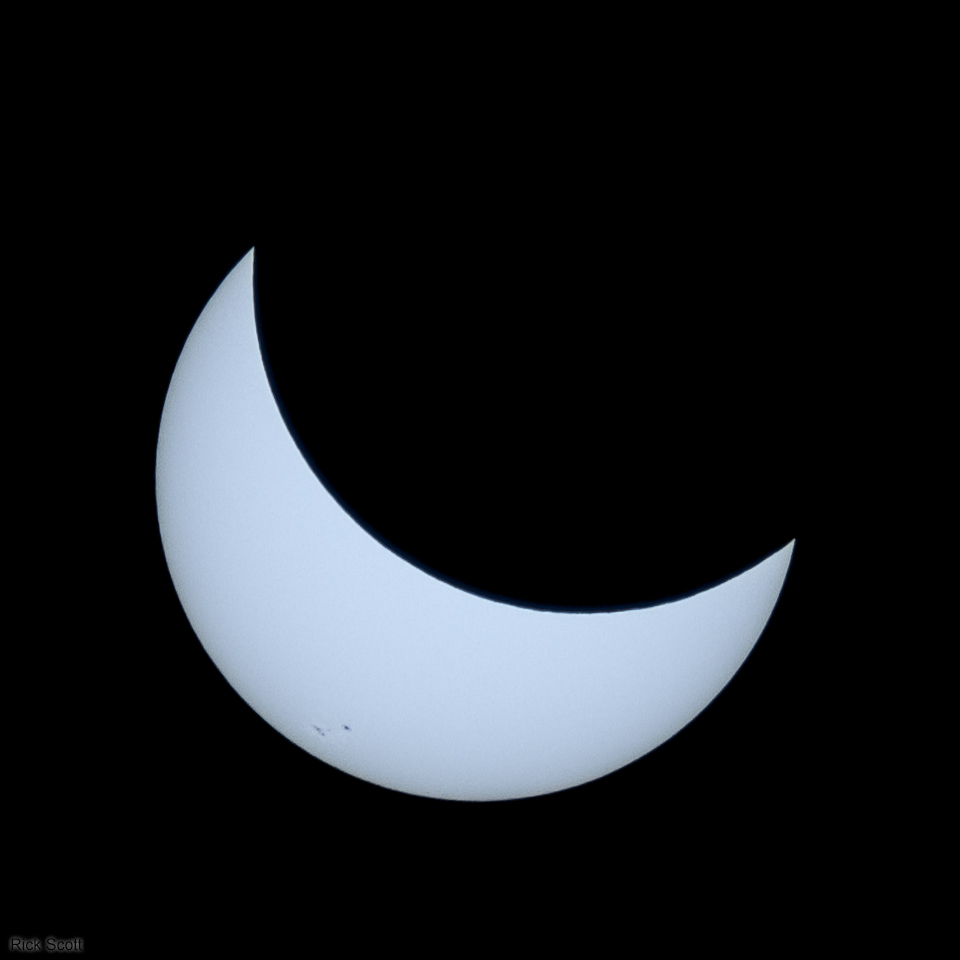
This is similar to what my family and friends in Phoenix, Arizona were able to see at maximum during the partial phase of the eclipse.
Exposure: 1/1000 sec, f/5, ISO 100, raw mode
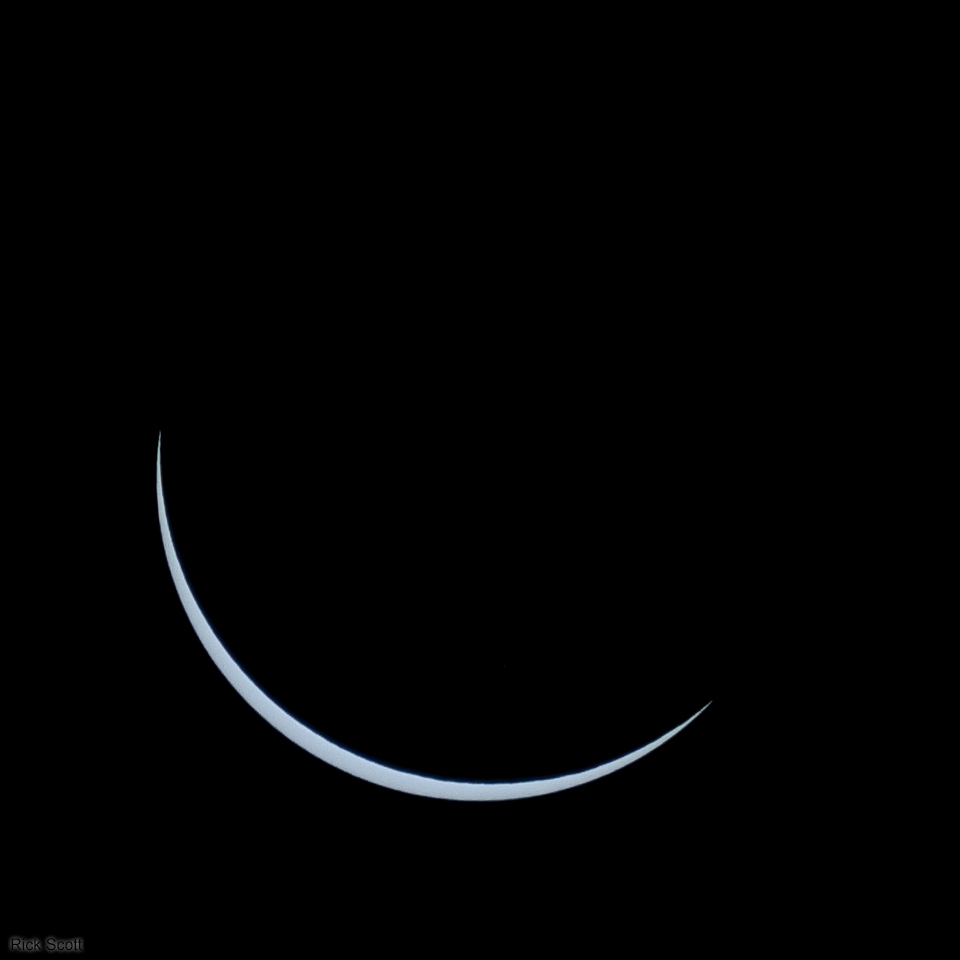
A nice crescent sun during the partial phase of the eclipse.
Exposure: 1/1000 sec, f/5, ISO 100, raw mode
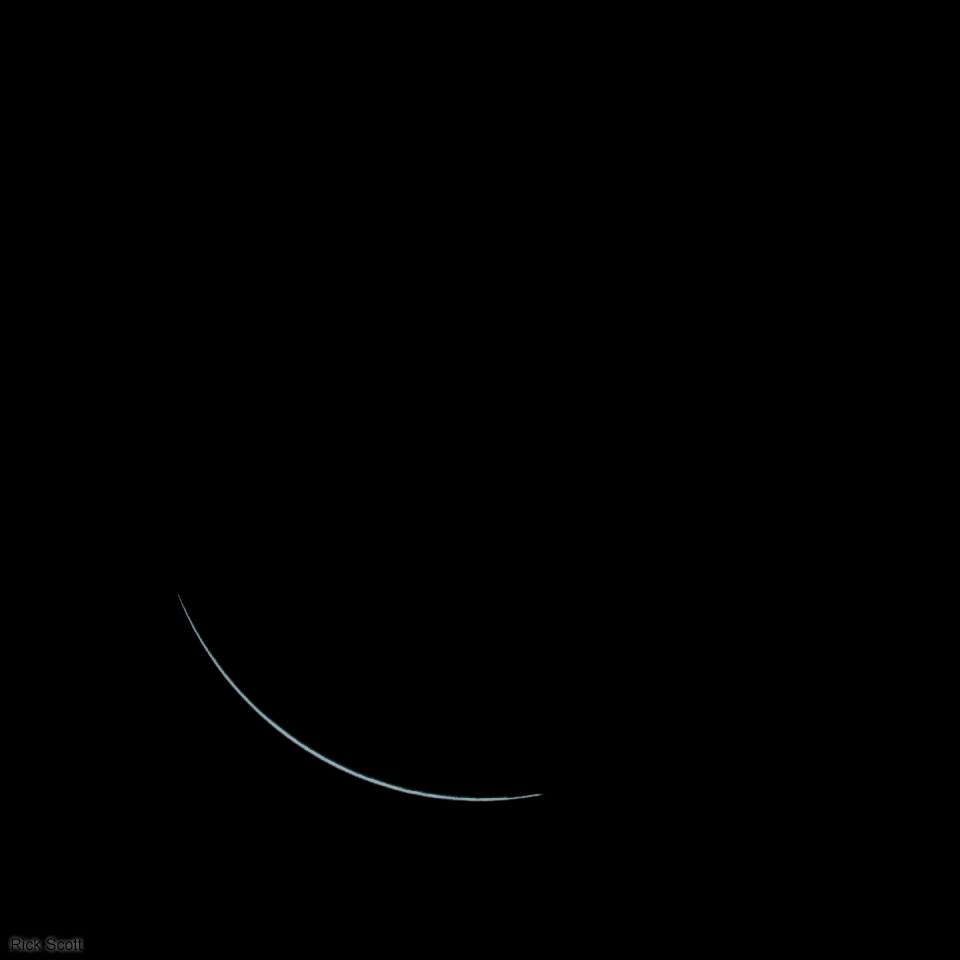
A razor thin crescent sun just before the start of totality.
Exposure: 1/1000 sec, f/5, ISO 100, raw mode
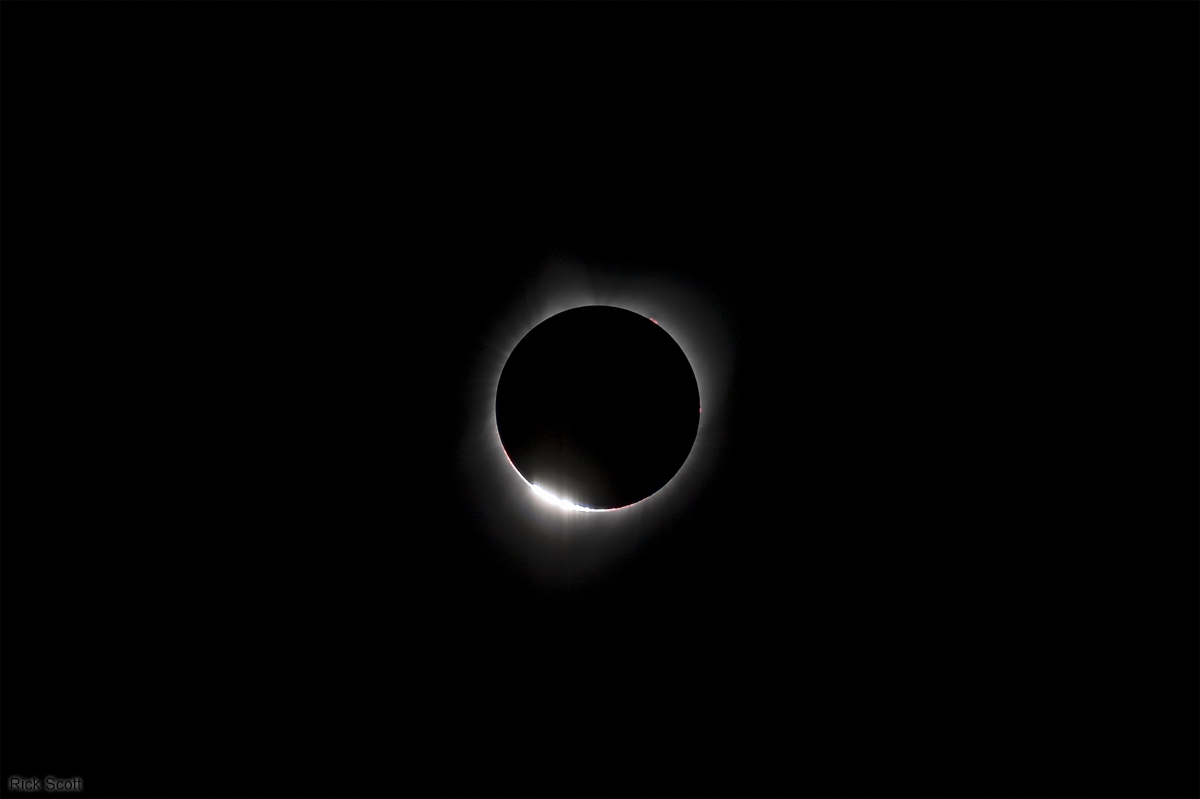
Baily's beads just as totality was starting. The beads are created by sunlight streaming through valleys on the moon's limb.
Exposure: 1/1000 sec, f/5, ISO 100, raw mode
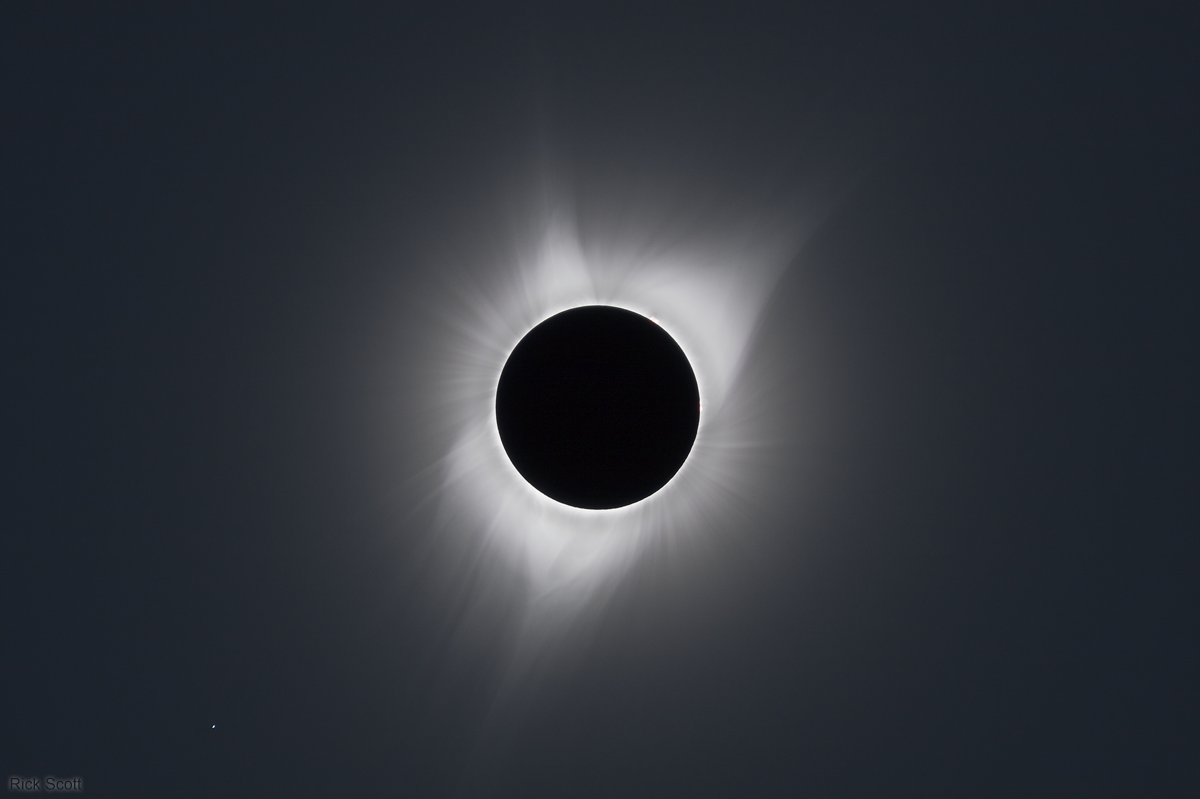
Totality and the outer corona! This is similar to what you can see with your eyes. The bright star Regulus is in the lower right of the photograph.
Exposure: Composite of exposures from 1/250 sec to 1/2 sec, f/5, ISO 100, raw mode
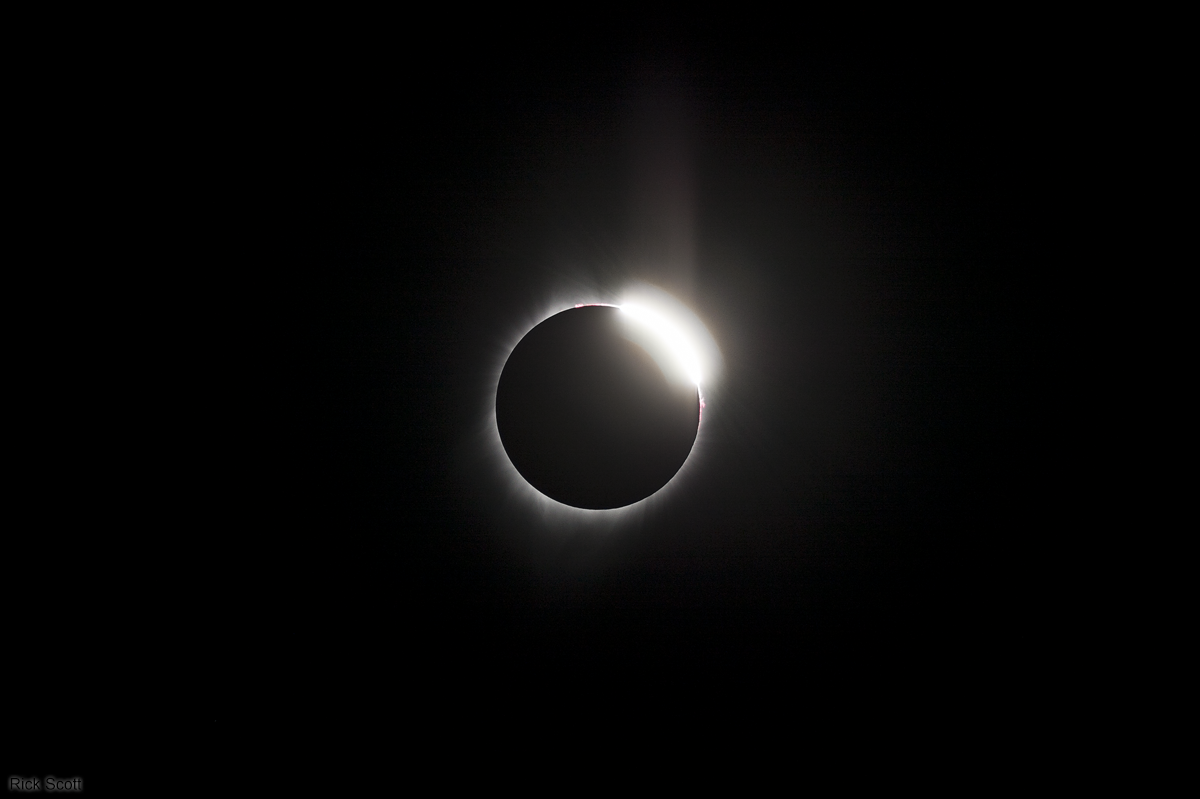
The diamond ring at the end of totality (3rd contact).
Exposure: 1/1000 sec, f/5, ISO 100, raw mode
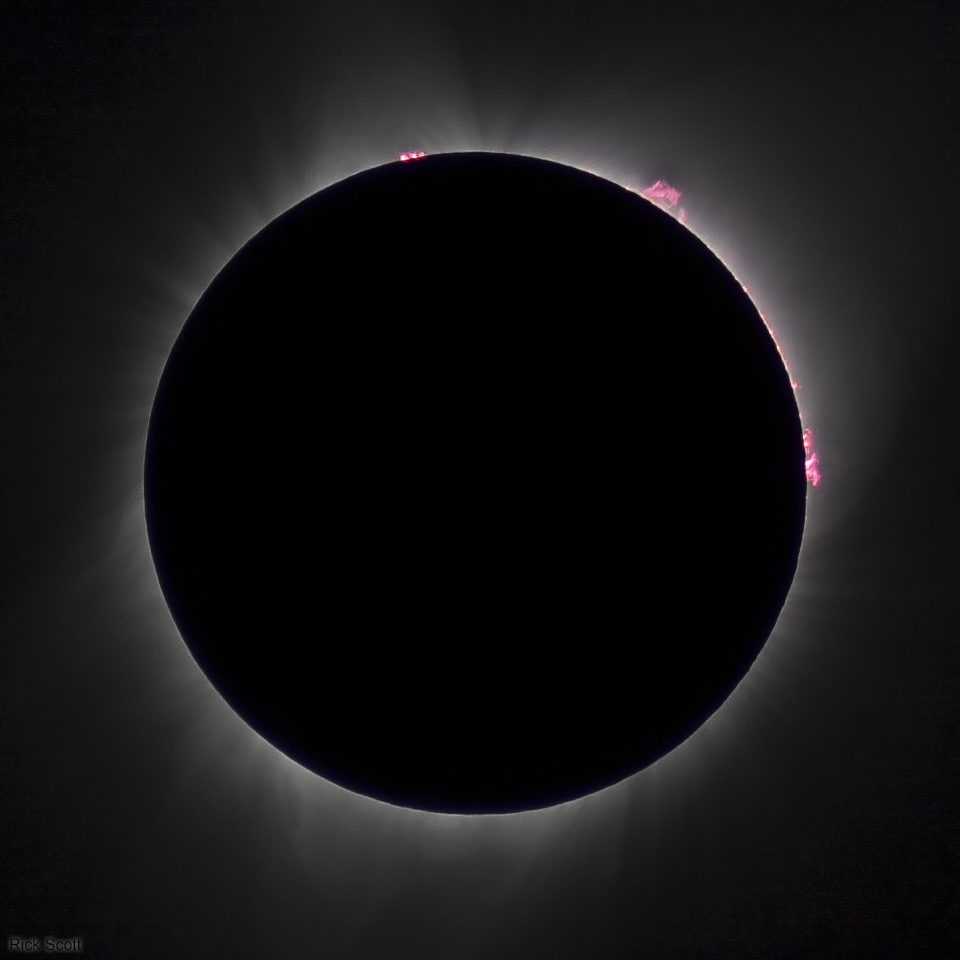
This is just before totality ended and shows the inner corona and prominences (flares) on the sun quite well.
Exposure: 1/500 sec, f/5, ISO 100, raw mode